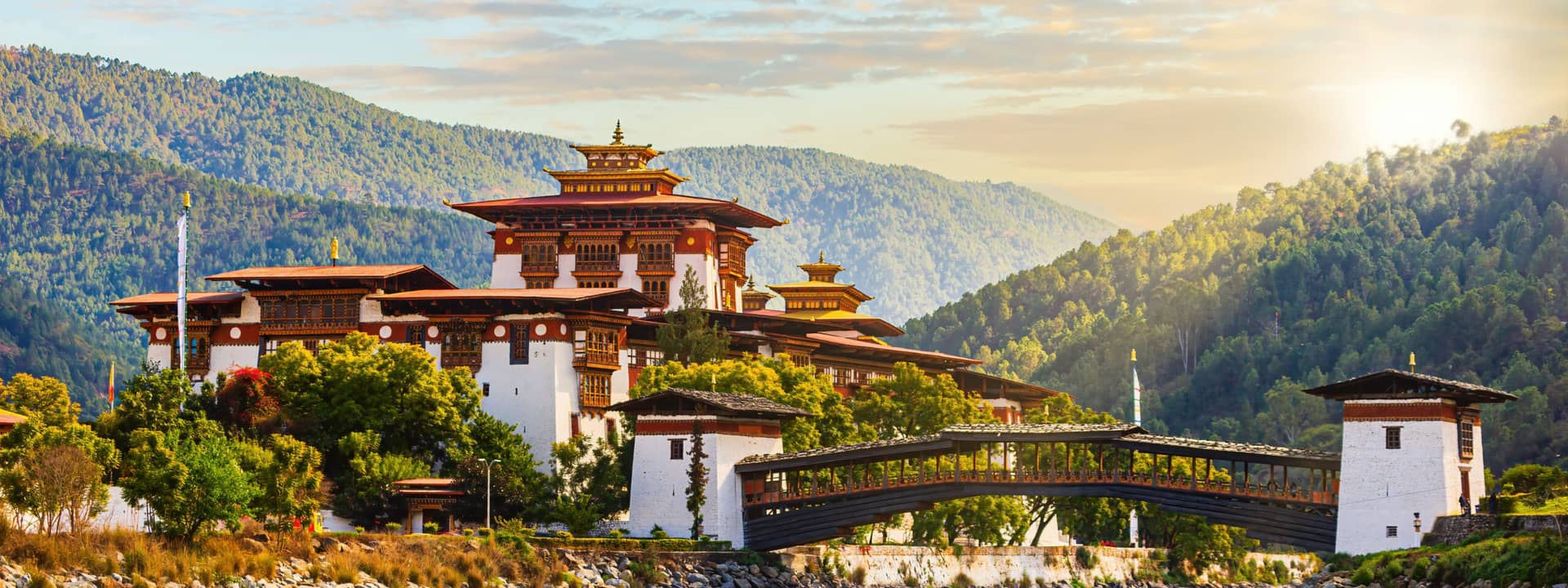If Bhutan is on your list, timing matters. It is not just the weather that changes, but a myriad of experiences that shift as fluidly as the seasons. This is a country where nature, tradition, and time itself follow a rhythm all their own. Knowing the best time to visit Bhutan will tailor your expedition to one of meaningfulness and connection.
Each season in Bhutan invites a different kind of traveler. Whether you’re chasing wildflowers in the mountains or seeking quiet moments in frost-covered valleys, there’s no one-size-fits-all approach. There’s only the right time for you.
Let’s explore the seasons—what they offer, what to expect, and how to choose the perfect time for your Bhutan journey.
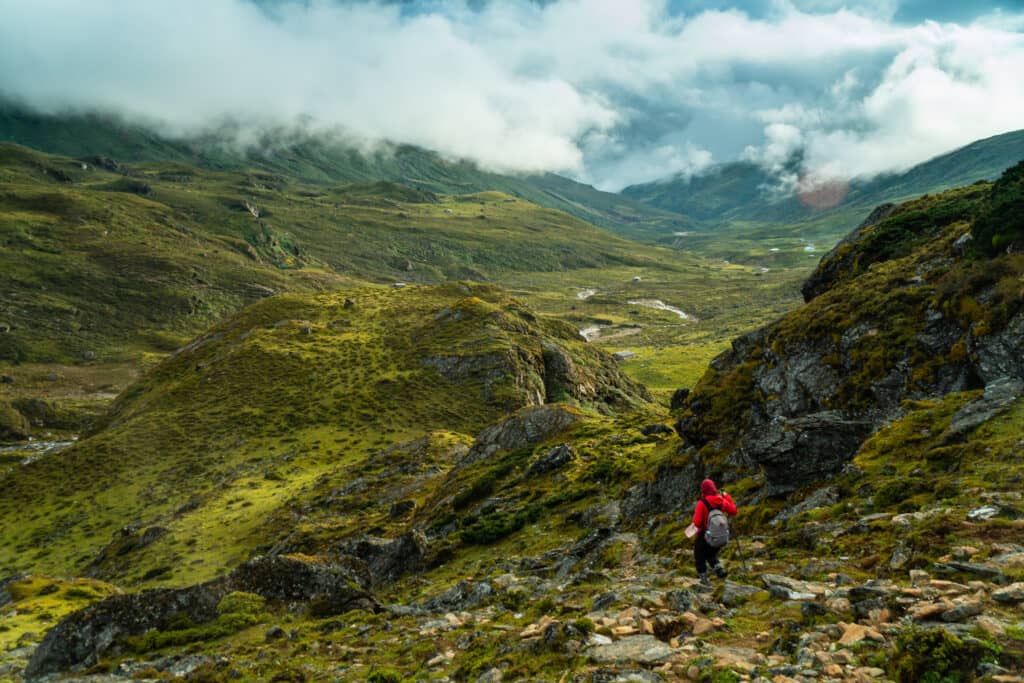
Spring: Wild Blooms and Mountain Trails (March to May)
Spring in Bhutan is a time of awakening. Rhododendrons burst across the hillsides, painting the mountains in vibrant color and signaling a new beginning. Daytime temperatures typically hover between 60–70°F offering ideal conditions for exploration.
This is an excellent time to trek. The Jomolhari Trek and Druk Path Trek provide sweeping views of alpine lakes and moments of natural serenity. You’ll likely pass blooming magnolias, forested ridgelines, and prayer flags fluttering in the mountain breeze.
Culturally, spring marks the celebration of Paro Tshechu—a sacred festival featuring elaborate masked dances and spiritual rituals. Held in April, it draws families from across the country and offers travelers an authentic window into Bhutanese tradition.
If you’re drawn to colorful landscapes, cool mountain air, and immersive cultural moments, spring is an inspired time to visit.
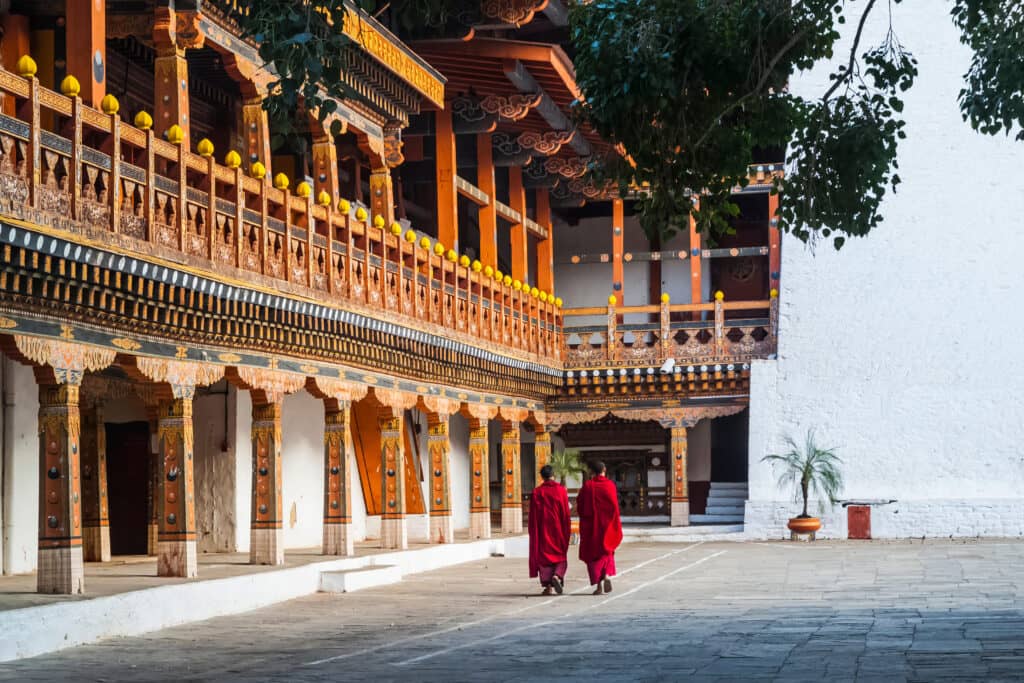
Summer: Lush Landscapes and Quiet Temples (June to August)
Summer is Bhutan’s most overlooked season. While the monsoon brings rain, especially in the southern regions, it also transforms the valleys into vivid, green sanctuaries. Mist rises off the rice paddies. Waterfalls thunder down cliffs. The air smells of earth and renewal.
Rainfall is typically heaviest in the afternoons, but mornings are often dry and beautiful. These peaceful hours are perfect for visiting temples, wandering through villages, or photographing misty landscapes without the crowds.
Travelers willing to embrace the slower pace will find this season rewarding. Central and eastern Bhutan, particularly areas like Trashigang, experience lighter rain and offer culturally rich experiences away from the tourist path.
With fewer travelers and lower prices, summer offers a quieter, more contemplative way to explore Bhutan’s spiritual side.
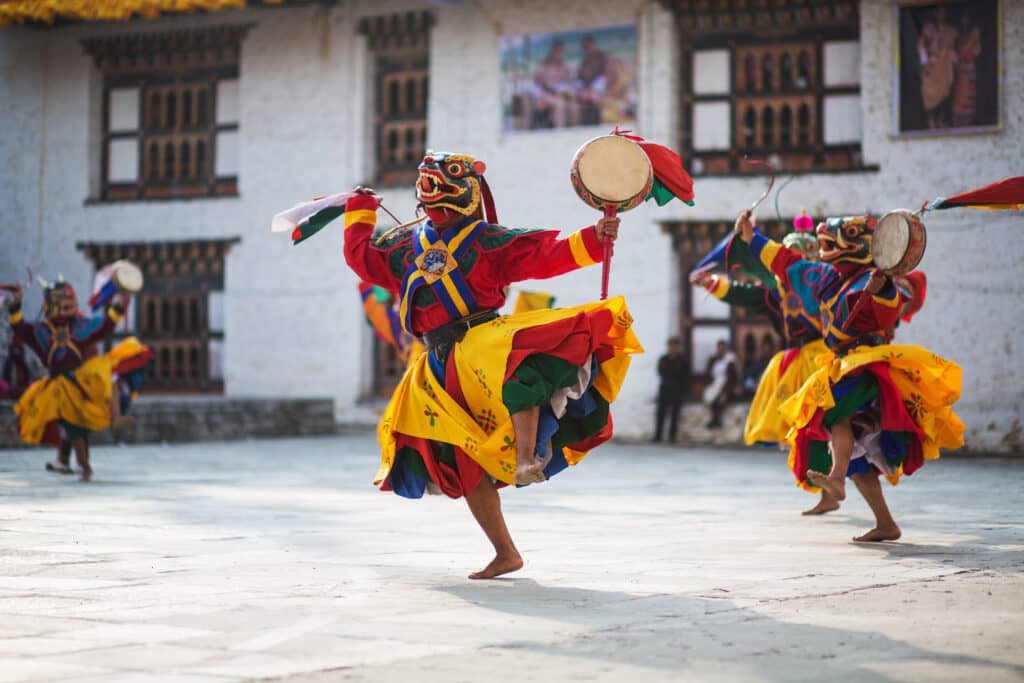
Autumn: Celebrations and Crystal Skies (September to November)
If you’re searching for the best time to visit Bhutan, autumn often claims the title. During these months, the skies clear to a dazzling blue, temperatures are moderate, and the Himalayan vistas are at their most photogenic.
Autumn is also festival season. Thimphu Tshechu, held in the capital, fills monasteries and dzongs with ritual dances and thousands of locals in their finest traditional attire. Meanwhile, smaller festivals throughout the countryside offer more intimate encounters with Bhutanese culture.
This is also the prime season for trekking. With dry trails and incredible visibility, even a simple day hike feels cinematic. From high passes to terraced fields, the landscapes glow with golden harvest light.
If you crave clear skies and the vibrancy of Bhutanese tradition, autumn is calling your name. It’s the most popular time to visit, so advanced planning is essential.
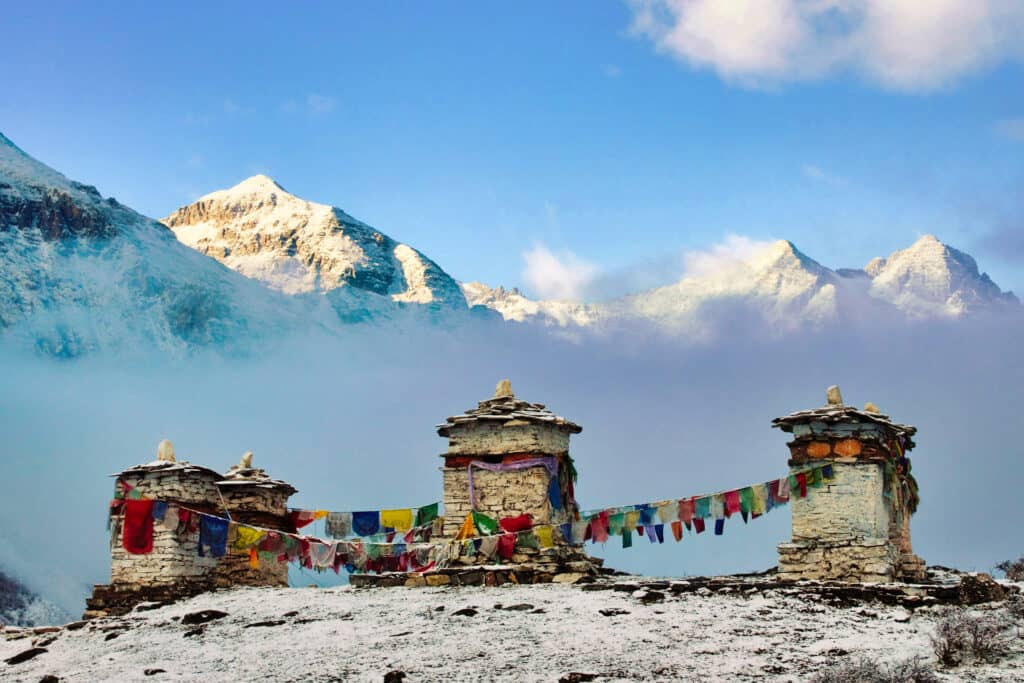
Winter: Peaceful Valleys and Crane Migrations (December to February)
Winter in Bhutan offers some of the most peaceful and reflective travel experiences. The Himalayan peaks shimmer under fresh snow, while valleys like Paro, Thimphu, Punakha and Phobjikha remain accessible and full of quiet charm.
One of winter’s most powerful experiences is witnessing the endangered black-necked cranes in Phobjikha Valley. These graceful birds glide above the marshlands all season, their calls echoing across the hills, and can only be seen from October to February. A rare sight that makes the winter incredibly magical.
While some mountain passes close due to snow, the western valleys remain open and serene. Days are often sunny and crisp, ideal for slow exploration, prayer flag walks, and warm meals shared fireside.
For those seeking calm and to see Bhutan’s beauty without crowds, this season offers space to breathe.

Planning Tips for Bhutan by Season
Bhutan’s weather can be beautifully unpredictable, so thoughtful packing is key. Dress in layers, starting with breathable base layers, and always carry a fleece or light down jacket. Rain gear is essential year-round, as is sun protection at high altitudes.
If trekking, be sure to bring supportive boots, moisture-wicking socks, and trekking poles if needed. And for festivals or monastery visits, modest clothing and a lightweight scarf or wrap will go a long way.
All travelers must book through a licensed Bhutanese tour operator. This policy ensures that every visit supports local communities and preserves Bhutan’s cultural integrity while allowing travelers to experience the country with expert guidance.
A Journey Worth Timing Right
There’s no single best time to visit Bhutan, only the one that fits your travel style and spirit. Spring invites you into blooming landscapes and festive energy. Summer rewards the patient with lush solitude and gentle rain. Autumn offers clarity and color at every turn. And winter speaks to the quiet seeker, ready to trade crowds for stillness.
In Bhutan, every season tells a story. All you have to do is choose the one that speaks to you.
Let Nomadic Expeditions help you craft a journey in tune with Bhutan’s most beautiful moments.

